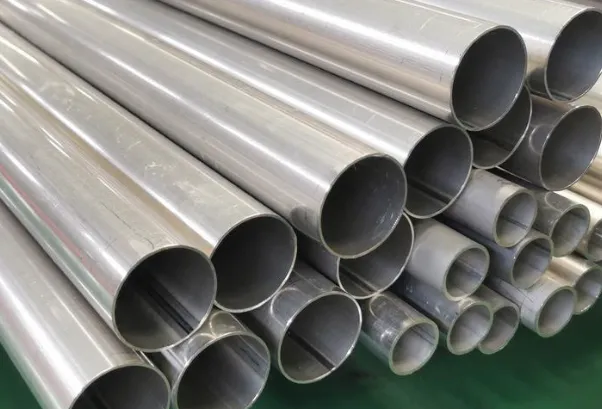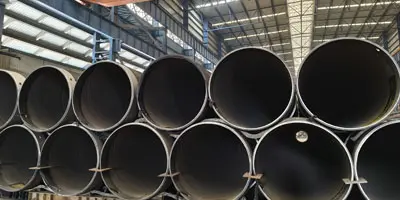As an important steel product, stainless steel pipes are widely used in many fields such as building decoration, industrial manufacturing, chemical pipelines, food hygiene, medical equipment, etc. According to different production processes, stainless steel pipes are mainly divided into two categories: seamless pipes and welded pipes. Although both are stainless steel materials, there are many differences in manufacturing methods, structural characteristics, performance, and usage scenarios.
As an economical cross-section steel, stainless steel pipes occupy an important position in the steel industry. Its output accounts for about 8% to 16% of the total steel volume, and it plays a broad and critical role in the national economy. In daily life, people often use stainless steel pipes to make stair handrails, guardrails, door and window decorations, and furniture components. Common materials include 201 and
304 stainless steel. In order to help users make more scientific and reasonable decisions in the material selection process, this article will start from multiple angles, deeply compare stainless steel seamless pipes and welded pipes, and comprehensively analyze the core differences between the two.
What is the difference between 304 stainless steel welded pipes and stainless steel seamless pipes?
1. Difference in appearance
The most direct difference between stainless steel seamless pipe and stainless steel welded pipe is the appearance. The length of seamless pipe is basically inconsistent, while the length of stainless steel welded pipe is basically fixed. The surface of stainless steel welded pipe is basically mirror-like, while stainless steel seamless pipe is gray-white.
2. Difference in process
Stainless steel seamless pipe is a long steel strip with a hollow cross-section and no seams around. The thicker the wall thickness of the product, the more economical and practical it is. The thinner the wall thickness, the higher the processing cost. The process of the product determines its limited performance. It uses round tube billets as raw materials for perforation and is made by cold rolling, cold drawing or hot extrusion. There are no welding points on the pipe. Generally, seamless steel pipes have low precision: uneven wall thickness, low brightness of the inner and outer surfaces of the pipe, high cost of fixed length, and pitting and black spots on the inner and outer surfaces are not easy to remove; its detection and shaping must be processed offline. Therefore, it has demonstrated its superiority in high pressure, high strength, and mechanical structure materials.
Welded steel pipe is referred to as welded pipe. It is a steel pipe made by welding steel or steel strip after curling and forming by a unit and a die. The production process of welded steel pipe is simple, the production efficiency is high, the varieties and specifications are many, and the equipment investment is small, but the general strength is lower than that of seamless steel pipe. Since the 1930s, with the rapid development of high-quality strip steel continuous rolling production and the advancement of welding and inspection technology, the quality of welds has been continuously improved, and the varieties and specifications of welded steel pipes have increased day by day, and they have replaced seamless steel pipes in more and more fields, especially in heat exchange spare pipes, decorative pipes, medium and low pressure fluid pipes, etc.
3. Differences in performance and price
Seamless pipes are much higher than welded pipes in corrosion resistance and pressure and high temperature resistance. With the improvement of welded pipe manufacturing technology, the mechanical properties and mechanical properties are gradually approaching seamless pipes. Seamless pipes are more complicated in manufacturing process, and their price is more expensive than welded pipes.
Based on the characteristics and differences between seamless stainless steel pipes and welded pipes, reasonable selection should be made when applying them to achieve economic, beautiful and reliable effects:
(1) When used as decorative pipes, product pipes, and prop pipes, good surface effects are generally required, and stainless steel welded pipes are usually selected;
(2) For generally low-pressure fluid transportation, such as water, oil, gas, air, and low-pressure systems such as heating hot water or steam, stainless steel welded pipes are usually selected;
(3) For pipelines used to transport fluids in industrial engineering and large equipment, as well as pipelines for transporting fluids in power plants and nuclear power plants that require high temperature, high pressure, and high strength, stainless steel seamless pipes should be selected;
(5) Stainless steel welded pipes are generally used for liquid transportation below 0.8MPa, and seamless pipes can be used for liquid transportation above 0.8MPa. If the pressure requirement is not high, it will be more economical to use welded pipes.
4. Differences in manufacturing processes
304 stainless steel welded pipes
Welded pipes are made by rolling 304 stainless steel strips or coils into a round shape through a forming unit and then welding them at high frequency. The weld can be polished to make it basically flat and consistent with the pipe body. Common welding processes include TIG (argon arc welding), plasma welding, high-frequency resistance welding, etc.
Its typical process flow is as follows:
Stainless steel strip → forming → welding → weld heat treatment (optional) → polishing or pickling → finished product inspection
304 stainless steel seamless pipe
Seamless pipes are produced by hot rolling or cold drawing. They are usually made of solid round billets that are heated and perforated into hollow tube embryos, and then extended, shaped, and annealed through multiple processes. Cold drawing/cold rolling processes are particularly suitable for small diameter and high-precision pipes.
Its typical process flow is:
Solid billet → heating → perforation → hot rolling/cold drawing → heat treatment → pickling/straightening → finished product inspection

How to distinguish 304 stainless steel welded pipes from seamless pipes? You can use the difference in appearance and corrosion method to observe the structure and welds, so as to check the difference in welds and comprehensive performance, and finally accurately distinguish them. At the same time, you can also distinguish the two steel pipes according to their performance, use, etc. In addition, if our needs require the pressure of stainless steel pipes, we must consider using seamless steel pipes. The thickness of stainless steel pipe welded pipes is relatively thin, and there is a weld. Whether it is air pressure, water pressure, or oil pressure, the bearing capacity is limited.
Summary:
Although 304 stainless steel welded pipes and
stainless steel seamless pipes are both made of stainless steel, they have significant differences in appearance, manufacturing process, performance, and application areas. Seamless pipes have higher pressure resistance, corrosion resistance and mechanical strength due to their weld-free structure, and are suitable for high temperature, high pressure and critical working conditions; while welded pipes are more suitable for decorative purposes and general fluid transportation scenarios due to their advantages such as high production efficiency, good surface finish, various specifications and low cost. In the actual selection process, stainless steel welded pipes or seamless pipes should be reasonably selected based on multiple factors such as the use environment, pressure requirements, appearance requirements and budget to achieve the best balance between performance, economy and aesthetics.






 English
English Español
Español بالعربية
بالعربية











 Phone :
Phone :  Whatsapp :
Whatsapp :  Email :
Email : 


